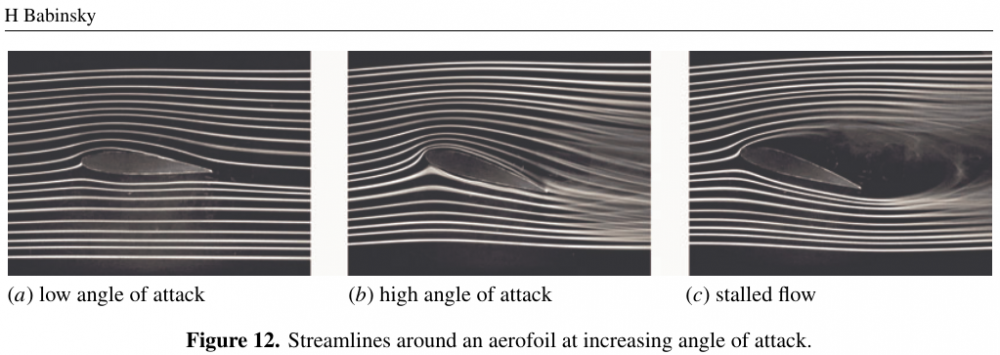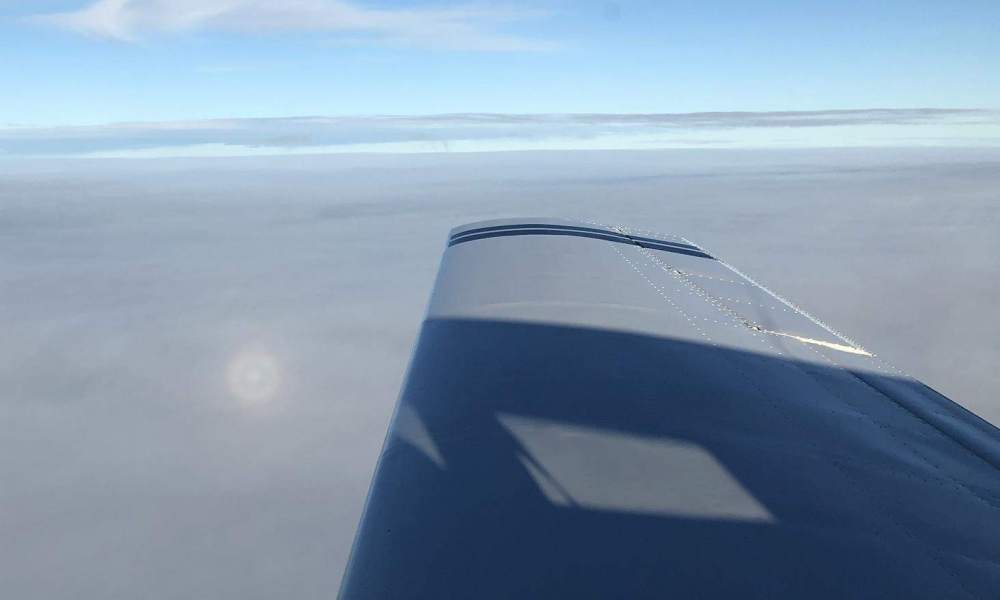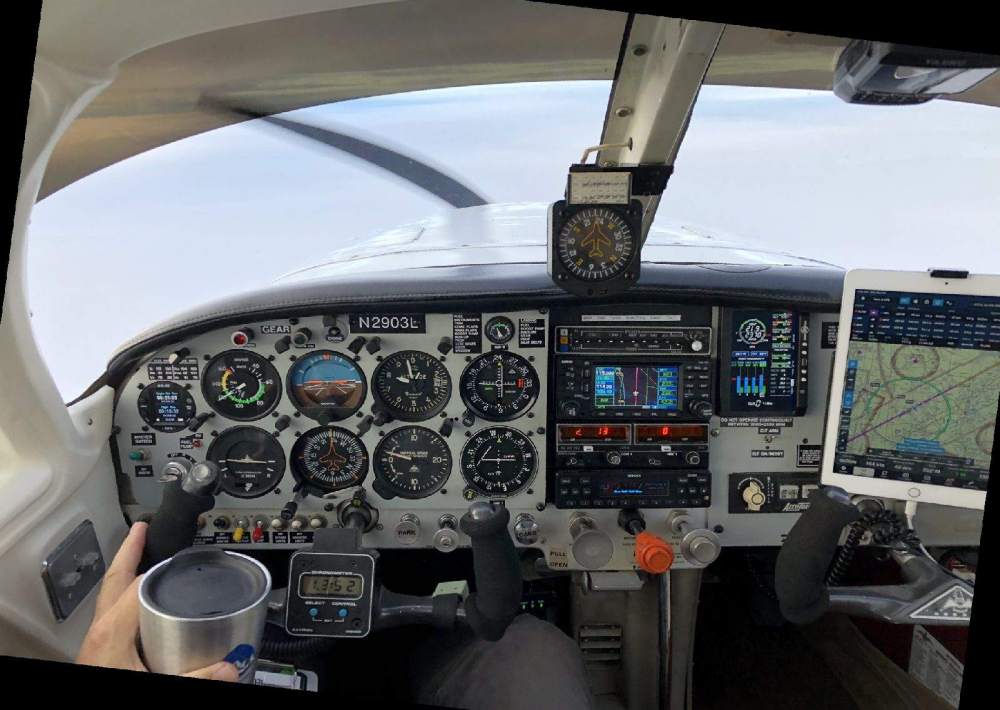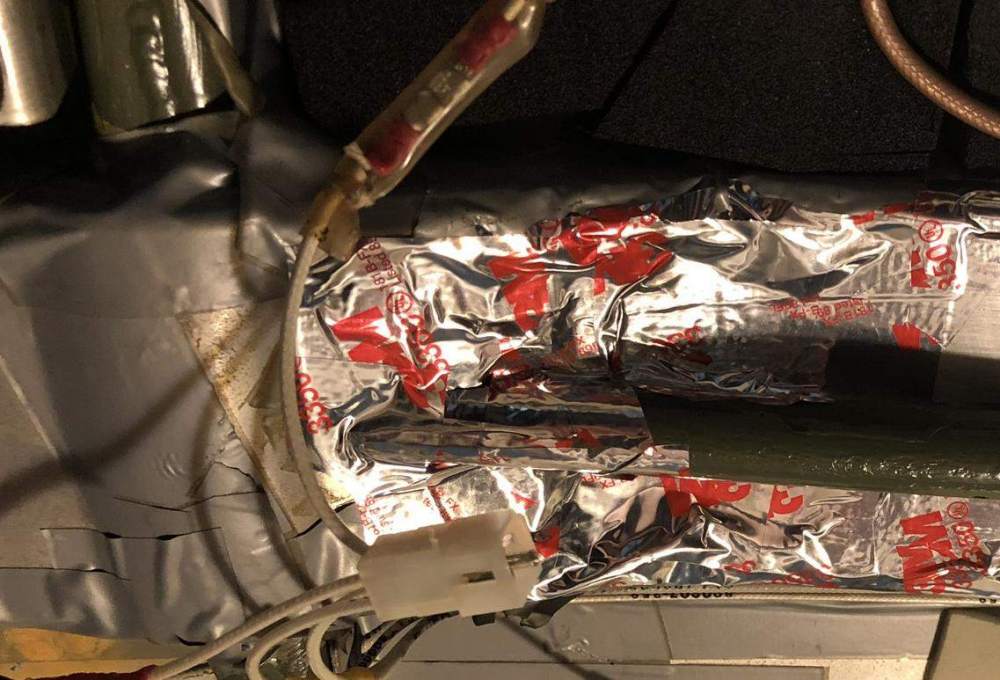-
Posts
3,181 -
Joined
-
Last visited
-
Days Won
8
Everything posted by 0TreeLemur
-
This video ROCKS. You gotta respect this dude's work ethos. I'm gonna study this video and try some of those techniques...
-
What we need is a good set of instructions written by someone who knows all the steps and magic potions. There is another video of the same person working on an older Malibu that has oily fingerprints that have absorbed into the paint like on my a/c. I started watching that one, but he is not so explicit about techniques/materials in that vid. Good stuff.
-

Frustrating Fuel Leak(s). Is It Possible That...
0TreeLemur replied to pilot_jb's topic in Vintage Mooneys (pre-J models)
On a big cross-country in the summer of 2018, from Alabama to Utah and back, our slightly leaky on both sides C became a 1 gallon overnight leak from one tank. It just happened. We had our tanks re-sealed last Oct. and despite the cost, have been happy with the results. No leaks. No fuel smell. No worries. -
Moving ambient air always has a lower static pressure than stationary ambient air like that in the cabin of your boat or airplane. When we open the storm window in our Mooneys in flight, air flows out of the cabin.
- 304 replies
-
- 1
-

-
- aerodynamics
- airflow
-
(and 2 more)
Tagged with:
-
Ron, I think your point is valid, but strictly on definition of lift>0. Is it useful lift to avoid high speed impact with the ground? No, except in perhaps an airshow context with an immanent recovery or in the context of "gee, we're only going to hit the the ground at 0.8 of the clean terminal fall speed" . Put a big enough engine and fast enough control system computer on it, you could make an aircraft that would fly in condition (c). It wouldn't be fast or fun, two things I think should be priorities in flight, at least for me.
- 304 replies
-
- 1
-

-
- aerodynamics
- airflow
-
(and 2 more)
Tagged with:
-
PIREP re: taping up hole in dorsal air plenum. Worked wonders. Much less cold air flow coming out from under plastic panel overhead. Much less drafty in cabin. Much easier to stay warm.
-
Mission, mission, mission. If the C fits the mission, then great. If another model, get that. If you wind up with a Mooney, get the corrosion inspection done to make sure she's a keeper. Then make it yours. That is the path that my co-pilot and I are on. In the case of our C, we've done panel redo, tank reseal, corrosion protection, ADS-B install, interior renovation. New shock disks coming next month, then 201 windshield and new paint sometime in next 3 years. We all spend more time fighting headwinds than loving tailwinds... Do it in something you enjoy being in. The new Garmin WAAS GPS have had the effect of making used 430Ws less expensive! My 2¢ worth. Happy Holidays to all!
-
The Wright brothers were engineers in every sense of the word, and trained themselves in the scientific method. You have probably heard that they built their own wind tunnel to take ideas they developed from reading the published work of Leonardo DaVinci, Otto Lillienthal, Octave Chanute, George Cayley and Samuel Langley, and test them. They communicated regularly with some of these folks and shared ideas. Although they were very careful to keep their work private because of the stigma associated with the pursuit of heaver-than-air flying machines, they did not work in a vacuum. The Wrights used their considerable experience in machining and fabrication of bicycles to build excellent lightweight structures. One might conclude that in the late 1800's the most likely profession to invent a working aeroplane would be bicycle manufacturers. Using their skills, experience, and self produced data to develop reliable flying machines, the Wright brothers took very few risks. They set the standard for the entire certified airplane industry that we work within. Wishing ya'll the best in the new year!
- 304 replies
-
- 2
-

-
- aerodynamics
- airflow
-
(and 2 more)
Tagged with:
-
Your statement about the effect of flaps is correct. Leading edge slats on jets do the same thing. For the sake of this discussion, I want to address THE MAGIC. Here I make one last attempt to clarify some often repeated misperceptions. To do this, I want to summarize some important observations using Figures 12(a) - (c) from the "howwingswork" pdf that Skip @PT20J uploaded and that clearly show it all. Note that this figure uses a symmetrical airfoil. I wish Babinsky would have included a photo with 0 angle of attack, you would see symmetrical streamline curvature around the airfoil. A symmetrical streamline pattern would produce no lift because the pressure distributions on the top and bottom of the symmetrical airfoil would be the same. Consider the following from "How Wings Work" by: Consider these figures with the knowledge that: K1) Far (e.g. 50 ft above and below) from the wing, the ambient static pressure is unaffected by the motion of the wing K2) Curved streamlines cause a decrease the air pressure in the direction of the concave side of the curvature You can deduce for yourself the following facts: F1) There is a small region on the lower surface near the leading edge at where a streamline terminates and the pressure is greater than ambient static air pressure. This "stagnation point" is natures way of telling the atmosphere that there is an object moving through the air, and "you better get outta my way". Stagnation points are very small- less than 1/2" (12mm) on our Mooney wings. F2) other than very near the stagnation point the pressure on the lower surface of the wing is less than ambient static air pressure because the streamlines are curved there towards the wing. Look for yourself. It is true. F3) the pressure on the upper surface of the wing is everywhere less than ambient static air presure because the streamlines are curved there towards the wing, except right near the trailing edge. F4) because of the positive angle of attack, the curvature of the streamlines is much greater above the wing than under it, meaning that the pressures on the upper surface are lower than those below it, despite the fact that the pressure on the lower surface of the wing is almost entirely less than ambient static pressure. F5) the wing in Fig. (c) is not producing lift because the airflow is separated from the upper surface, destroying the lift producing streamline curvature seen in (a) and (b). Conclusions: C1) Over most of the lower surface of a wing generating lift, the air pressure is less than ambient static. Wings do not ride on a cushion of air that has a pressure greater than the ambient static air pressure. C2) While the pressure over almost the entire wing surface is less than ambient air pressure, on average the pressure above the wing is less than below the wing. That difference is the magic of lift. <Disclaimer> I am an engineering professor with 23 years of experience teaching engineering fluid mechanics. I am not a rocket scientist.
- 304 replies
-
- 2
-

-
- aerodynamics
- airflow
-
(and 2 more)
Tagged with:
-
Is that a mic drop that I just heard??? Streamline curvature causes pressure gradients in the direction opposite the curvature. If you look at the streaklines on Fig 12(a) and 12(b), where they are the most curved the airfoil experiences the lowest pressure. If that happens on the upper surface, then it is called lift. Lift has virtually nothing to do with laminar flow (largely a myth), turbulent boundary layer, wingtip vortices, or Reindeer. It's MAGIC as per the flight attendant in the video above. The magic is the last equation in the paper that Skip just uploaded.
- 304 replies
-
- aerodynamics
- airflow
-
(and 2 more)
Tagged with:
-
The downwash component of lift is very small compared to the streamline curvature component created by a positive angle of attack. Assuming SL air density of 1.2 kg/m3, and a wing planform area of 15.8 m2 (170 ft2), the downwash velocity to create 11,120 N (2500 lb) of lift is an amazing 24 m/s (79 ft/s or 54 mph). Downwash, which is just the vertical component of the flow coming off the underside of the wing, so the total downwash speed would necessarily be considerably greater than this speed if that were the sole factor. Also note that here I used the entire planform area, which is an overestimate of the cross-section of the downwash flow cross-sectional area, so the actual speed of downwash would necessarily be much larger than the calculated value, which it isn't. I think it is safe to say that the downwash component of lift is much less than 10% of the lift. Somebody earlier in this thread said it well when they used the analogy of little kids (or not so little ) holding a curved hand out an open car window at highway speed. The lift is due to the curvature. There just isn't a high speed jet of air coming off the bottom of the kids' hand... Your last sentence is pretty much right- the ground does interfere with vortex growth especially when the wing is near the ground.
- 304 replies
-
- 1
-

-
- aerodynamics
- airflow
-
(and 2 more)
Tagged with:
-
Hey Gomer, That door seal from Knots2U was good for the most part. It took a little bit of "adjustment" along the bottom to get a decent seal. By adjustment, we shimmed the aluminum "L" shaped piece upward from the bottom of the door by inserting a little bit (1/8") thick piece of gasket material under it. This reduced the gap between the bottom of the door frame and seal. When I take it in for annual to a MSC next week I'm going to ask them to tighten the upper hook a little bit. There is still a bit of hissing noise coming from the upper door. Fred
-
Flew Lil' Sister to a meeting in MS 12/23/19. Thanks to a big extra-tropical low over the FL panhandle, had a rippin tailwind on the way, but low ceilings everywhere. 196 kt GS in cruise descent. Shot my first RNAV approach to minimums since earning my IR. Need to practice watching needles while looking for runway... I need a cup holder.
-
Ok. Work with me here. Imagine that when you are sitting in your car waiting to turn left. Cars are whizzing by just a few feet away. As they pass, they don't push your car away, they pull it towards those passing cars. You can feel the motion. Why pull towards and not push away? Because the air being forced around their vehicle is moving around the car, which means that their car is surrounded by a region of air that has pressure less than the static atmospheric pressure. That causes the ambient air to move towards the vehicle, and actually fills the void left behind each car as it continuously moves. Ever notice that the same thing happens when trains pass each other in a tunnel? The windows/walls are pulled out when the trains pass. Your aircraft wing does the same thing. The static pressure both above and below the wing is depressed because of this motion. Near the ground, within 2 wingspans is the rule of thumb I've heard, the ground partially cuts off the flow of air upward towards the moving wing. This causes the stagnation point on the leading edge of the wing to move downward a bit, because more of the air that fills the void left by they airplane's forward motion to come from above the wing. This increases lift. It also impedes creation of wing tip vortices a little bit, which reduces induced drag a little.
- 304 replies
-
- aerodynamics
- airflow
-
(and 2 more)
Tagged with:
-
Read this, it is the closest thing you can find to a real explanation of how wings generate lift by causing streamline curvature. Newton's second law F=ma written normal to the streamlines shows how streamline curvature creates a pressure gradient. The rest (wing shape, fluid compressibility, axial symmetry, angle of attack, Reynold's number, laminar/turbulent boundary layer ...) is details. http://cribme.com/cu/data/Chemical Engineering/Fluid Mechanics/Class Notes/Lecture6.pdf If you don't understand it, just fly. The amount of technology that we use that non-experts don't understand is incredible. Anyone want to develop their own GPS system?
- 304 replies
-
- 1
-

-
- aerodynamics
- airflow
-
(and 2 more)
Tagged with:
-
As you are thinking about it, Newton doesn't really work that way in the case of a flying wing. The tip vortices are a symptom of lift, not the cause of it. The thing that keeps a flying wing aloft is the pressure distribution, with higher average pressure below the wing than above. This causes a flow of air from the lower surface to flow towards the upper by wrapping around the wingtip. That creates a tip vortex. Theoretically, and infinitely long wing will produce lift and no tip vortices. This truism is a useful device to help keep you thinking about lift generation correctly. Tip vortices represent lost energy. Minimizing them through winglets and other such devices reduces the lost energy and therefore decreases drag. Winglets don't decrease lift. The equation that principally describes why an airfoil generates lift is Newton's F=ma, except written to calculate the force perpendicular to the streamlines, not along them. The radius of curvature of the streamlines appears in this equation, which shows how flow curvature created by the shape of the airfoil affects the pressure distribution on the airfoil. Of course, the actual situation is much more complex, requiring the use of computational fluid dynamics codes, especially if compressibility effects become important, which happens above approx. Mach No. 0.2.
- 304 replies
-
- 3
-

-
- aerodynamics
- airflow
-
(and 2 more)
Tagged with:
-

NOAA MOS Extended Ceiling and Visibility No More!
0TreeLemur replied to DualRatedFlyer's topic in General Mooney Talk
The Localized Aviation MOS Program (LAMP) is a potential replacement going out 24 h. I like it. https://www.nws.noaa.gov/mdl/gfslamp/stnplots.php and https://www.weather.gov/mdl/lamp_home I am affiliated with NOAA, but not with their aviation products division. PP only. -
Weird. They just love your plane to death! I'm going with the "rat fell from above" theory @carusoam's suggestion that the lizard died trying to push start the engine is the funniest thing I've heard in a while!
-

Mooney down in CT - N53CP
0TreeLemur replied to TTaylor's topic in Mooney Safety & Accident Discussion
I've never been shown a spring loaded alt air door on our '67C. How does one check that? Photo? Thx. -
Those are new vinyl stickers too. I got those on eBay. Shipped from the Philipines. Cost was minimal, just 3-4 week delivery by snail mail.
-
Video from Fresno, showing a King Air 200 being driven around the ramp by a 17 year old girl who hopped the fence and decided to go for a drive. https://www.cnn.com/2019/12/18/us/teenager-steals-plane-trnd/index.html I don't think I could just climb into a King Air and get it started. Flight sim experience or found a good online video? A for effort, F for taxi skills.
-

Seat covers or seat dimensions M20C
0TreeLemur replied to Urs_Wildermuth's topic in Vintage Mooneys (pre-J models)
@carusoam can probably either: (a) answer this, or; (b) suggest someone who knows. -
Given the importance of occasional SB-208B inspections, I would not use tank sealant there. The 3M 350 tape I used is made from non-absorptive mylar with excellent adhesive properties. I'll be surprised if it isn't still sticking there years from now.
-
Avoid rubber tubing. Modern polymer tubing styles are so much more durable. Nylon is very durable, abrasion resistant, flexible, stiff and clear. Polyethylene- milky but very rugged. That is what runs out to your pitot tube, and out to the vacuum servos.. Even Tygon (expensive but will survive the end of the planet) is great behind the panel. Rugged, expandable, lasts forever. Silicone- great for high temperature apps. Not an A&P but I have worked with tubing much of my career.
-
This picture was taken after I taped it up. Note the tubular steel member coming in from the right. The tape covers a large elliptical hole.





